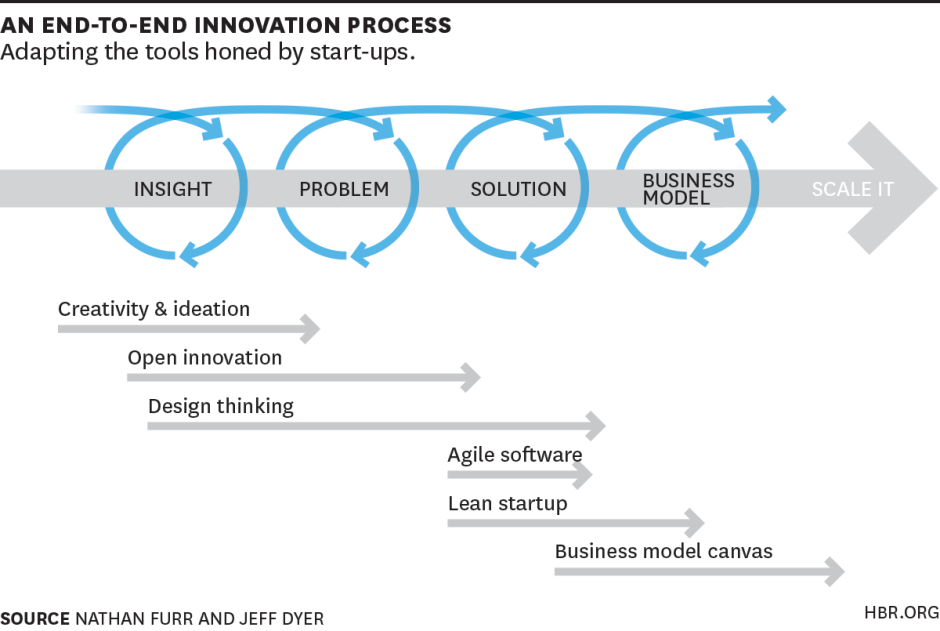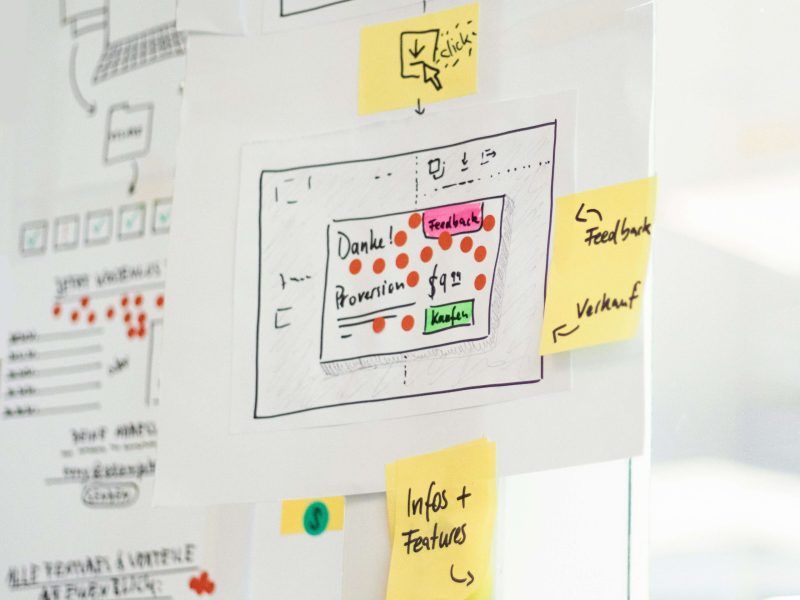A UX Designer’s Perspective
Introduction: The Innovation Imperative
In today’s breakneck digital landscape, innovation isn’t a luxury—it’s existential. Economic uncertainty, shifting consumer behaviors, and disruptive competitors demand more than incremental tweaks; they require a systematic, end-to-end innovation process.
As a UX professional, I’ve witnessed how human-centered design transforms scattered ideas into market-shaping solutions. This process isn’t linear; it’s a dynamic ecosystem where strategy, creativity, and execution intertwine.
Let’s dissect this framework, stage by stage, through a UX lens.
Stage 1: Insight – The Spark of Innovation
Purpose: Identify unmet needs, emerging trends, and latent opportunities.
UX Toolkit:
Ethnographic Research: Observe users in their natural environments to uncover unarticulated pain points.
Trend Radar: AI-powered tools scan weak signals (patents, startups, academic research) to visualize trends.
Open Innovation: Crowdsource insights from employees, customers, and partners.
Why UX Matters Here:
“UX designers act as the voice of the user, ensuring innovation is driven by genuine needs—not just technological possibilities.” Without deep empathy, opportunities remain theoretical.
Case Example: Global consumer brands now start each day by analyzing AI-generated data alerts—transforming market signals into strategic foresight.
Stage 2: Problem – Defining the Challenge
Purpose: Frame the right problem to solve.
UX Toolkit:
Jobs-To-Be-Done (JTBD): Identify the core “job” users hire your product to do.
Problem Mapping: Visualize root causes using 5 Whys or Fishbone Diagrams.
SMART Framing: Ensure problems are Specific, Measurable, and Actionable.
Pitfall Alert:
Teams often jump to solutions prematurely. UX rigor forces alignment on the true problem—e.g., defining not just “users need faster onboarding” but “users feel overwhelmed by financial jargon during signup.”
Stage 3: Solution – Generating & Testing Ideas
Purpose: Transform insights into validated concepts.
UX Toolkit:
| Method | Tool Example | UX Role |
|---|---|---|
| Design Sprints | Collaborative boards | Facilitate rapid prototyping |
| Lean Startup | Innovation toolkits | Build/test MVPs |
| Hackathons | Idea platforms | Cross-functional collaboration |
Key Principle:
“Test to improve, not to prove.” UX designers prototype wireframes and run usability tests to kill flawed ideas early—saving millions in misguided R&D.
Example: Tech giants’ hackathons blend developers, marketers, and UX designers—yielding breakthrough features.
Stage 4: Business Model – Ensuring Viability
Purpose: Design a sustainable value engine.
UX Toolkit:
Business Model Canvas: Map value propositions, channels, and revenue streams.
Value Proposition Design: Align user benefits with business goals.
Portfolio Balancing: Weigh risk across innovation horizons.
UX Integration:
UX designers pressure-test models: Will users pay? Does this enhance—or complicate—their journey? Leading financial services succeed by embedding UX in business casing.
Stage 5: Scale – Launching & Evolving
Purpose: Deliver value at market scale.
UX Toolkit:
Agile Roadmaps: Visualize phased feature rollouts.
Feedback Loops: Embed analytics to track user behavior post-launch.
Culture Tools: Gamify employee innovation adoption.
Critical Insight:
Scaling isn’t a one-time event. Cutting-edge “exception-based planning” systems use real-time data to continuously refine innovations.
Why End-to-End Innovation Fails Without UX
1. Risk Reduction: Early user validation prevents costly late-stage pivots.
2. Adoption Acceleration: Intuitive experiences = faster market penetration.
3. Strategic Alignment: UX bridges silos between R&D, marketing, and execs.
“Innovation is not just about creating new things; it’s about creating value for users.”
Tools & Frameworks: Your Innovation Stack
| Stage | Tools | Frameworks |
|---|---|---|
| Insight | Trend analysis platforms | Design Thinking |
| Problem | Collaborative whiteboards | Jobs-To-Be-Done |
| Solution | Prototyping software | Lean Startup, Design Sprints |
| Business Model | Business modeling templates | Three Horizons Model |
| Scale | Roadmapping software | Agile, OKRs |
The Future: AI, Autonomy & Adaptive Innovation
AI-Powered Foresight: Predicting trend convergence (e.g., AI + sustainability).
Autonomous Execution: AI systems handling operational planning, freeing humans for strategic UX work.
Democratization: Empowering frontline employees to submit ideas via collaboration platforms.
Conclusion: Building Your Innovation Engine
The end-to-end process is a living organism—not a rigid pipeline. To thrive:
Embed UX at every stage—not just as “pixel polish.”
Balance structure and flexibility: Use stage gates but iterate relentlessly.
Leverage specialized tools for scaling strategy and execution.
By embracing a culture of continuous innovation and integrating UX throughout the process, businesses unlock creative potential and thrive in the digital landscape.
Further Reading:


